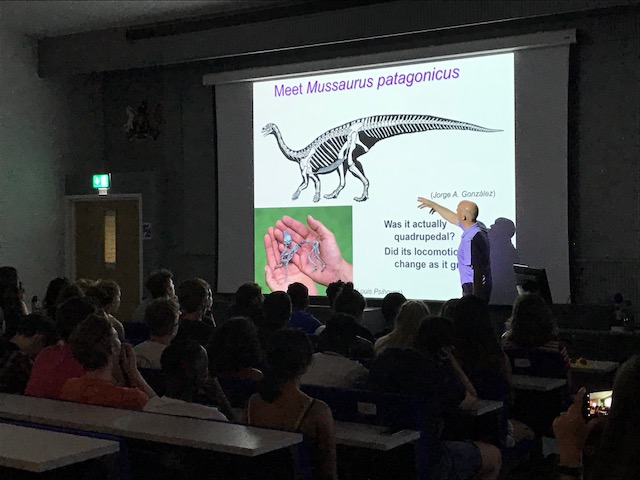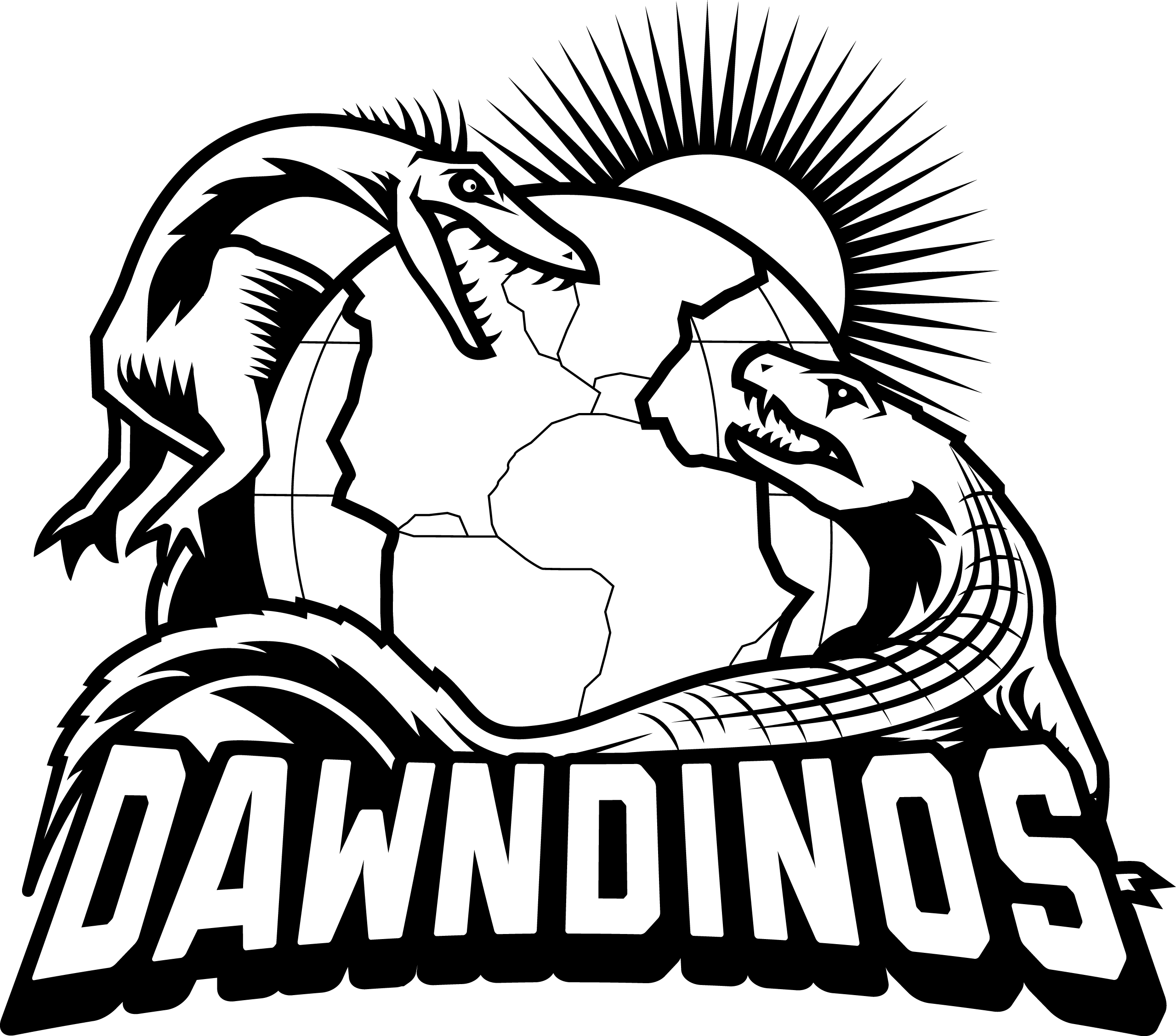August 2019
Secondary STEM students learn about biomechanics and other fun science at DAWNDINOS outreach morning!
On 28th August 2019, thirty students (Year 11) on the RVC Summer School programme visited the Structure and Motion Lab and met the DAWNDINOS team to explore the Triassic, dinosaurs/archosaurs, modelling/simulation, biomechanics, anatomy and many more aspects of our research!
Professor Hutchinson introduced students to our research by giving the background and an overview the DAWNDINOS project.

Dr. Michel looked at cutting edge techniques including XROMM which has revolutionised the study of animal biomechanics, and Professor Hutchinson introduced students to modelling and simulation and explained how we digitally reconstruct extinct species.

Dr. Bishop explored the physics of movement and showed students how muscles work and control movement.

We received some great feedback from the students………
“The session was extremely interesting, something I knew very little about, and it has opened my mind to consider working in this area.”
“I enjoyed learning about parallels between living animals and their extinct relatives.”
“I enjoyed everything but particularly learning about locomotor superiority and the advancement of computers. I am interested in a career in biosciences and now especially in biomechanics.”
The session ended with a quiz (with DAWNDINOS prizes!) to test what students had learned. No one left empty handed as cool key rings were given to everyone!!
Thank you to everyone involved. An enjoyable morning was had by all!
August 2018
RVC summer school students had fun at DAWNDINOS outreach event
On 29th August (Year 11) students on the RVC Summer School programme visited the Structure and Motion Lab and met the DAWNDINOS team to learn about our research.
Following a short talk by Prof Hutchinson students enjoyed interactive practical sessions in the Structure and Motion Lab.



We received great feedback from the students on how much they enjoyed the session.
To arrange a visit to the RVC’s Structure & Motion Lab to meet the DAWNDINOS team please contact Louise Kermode at lkermode@rvc.ac.uk
July 2018
50 Students from the Sutton Trust meet the DAWNDINOS research team.
On 25th July the DAWNDINOS team welcomed Year 12 students from the Sutton Trust for an afternoon of interactive learning and lots of fun!
Prof John Hutchinson opened the session with an introduction to the research, the aims of the project and some background on archosaurs during the Triassic/ Jurassic transition.

He explained how the DAWNDINOS teams’ technical and scientific expertise is being used to pioneer new and exciting technologies using cutting edge techniques including XROMM and high resolution cameras for the measurement and analysis of movement in animals.
Students then participated in three activity sessions held at the Structure and Motion Lab.
At Prof Hutchinson’s session students were able to walk/run on a pressure pad to show how their behaviours involve forces and motions that we can measure precisely and can be used in computer simulations.

At Dr Peter Bishop’s session students learnt how muscles work and control movement.

Students demonstrated how muscles work as levers to understand how the leverage of a muscle versus its load influences how effective at performing work it can be. They tried lifting a heavy bucket of water close to chest, and then out at arm’s length. It was a lot more difficult to do it at arm’s length because of a lower leverage.
At Dr Andrew Cuff’s stand students were fascinated to learn the science of 3D digital modelling on extant species and how the anatomical data from the living relatives (“living archosaurs”) of Triassic crocodiles and dinosaurs will help us estimate muscle function in these extinct animals.
Students watched demos on computers and held 3D printed/real bones (living + fossil archosaur limbs).

An enjoyable afternoon was had by all and feedback from students was very positive indeed. They said that the research team were all very friendly and explained the concepts really well. Typical comments following the session were that they did not know that “birds are the living relatives of dinosaurs” and they were amazed at the “different digital techniques that are now used to study locomotion.”
Thanks to everyone involved!
If other schools would like to arrange a visit to meet the DAWNDINOS team please contact Louise Kermode

